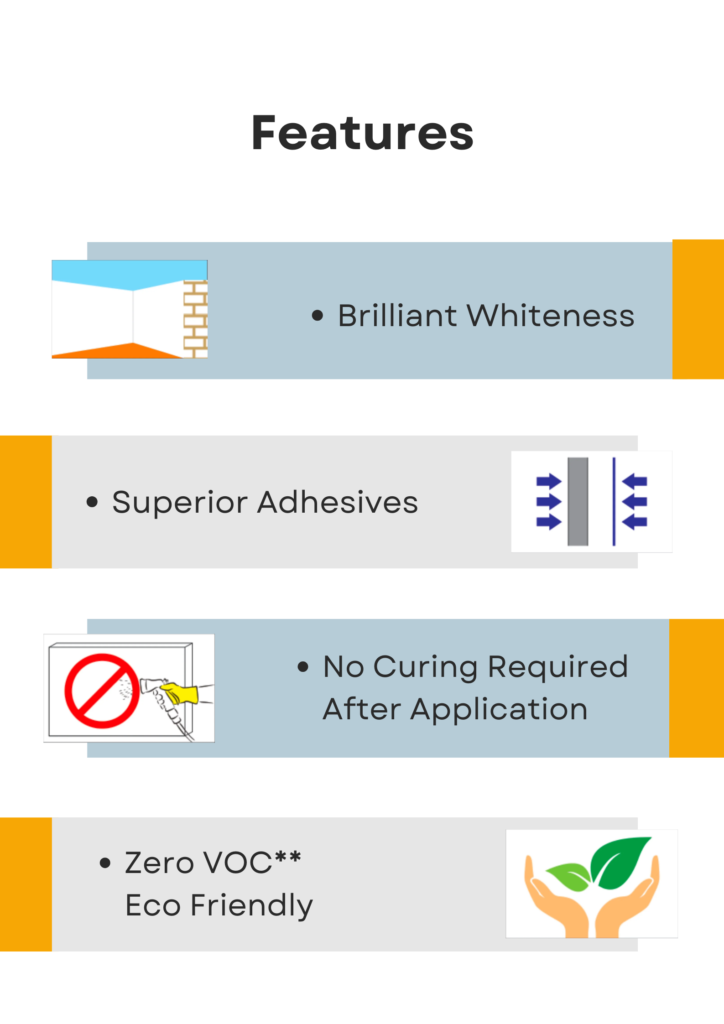Wall Putty is a versatile and essential construction product that plays a key role in ensuring your walls are durable and visually appealing. If you’re planning to enhance your interiors or exteriors, understanding the benefits of wall putty is crucial. Here’s a detailed breakdown to guide you.
What is Wall Putty?
Wall Putty is a fine, white cement-based material used to create a smooth surface on walls before painting. It fills cracks, levels uneven areas, and enhances the adhesion of paint, ensuring a long-lasting finish.
Tips for Best Results:
- Always follow the manufacturer’s instructions for mixing and application.
- Avoid applying wall putty in extremely humid or wet conditions.
- Use high-quality tools like a trowel, putty blade, and sandpaper for precise application.
Benefits of Using Wall Putty
| Benefit | Description |
|---|---|
| 1. Smooth Finish | Wall putty fills cracks and surface imperfections, providing a smooth, uniform base for painting. |
| 2. Enhanced Durability | It strengthens the wall surface by forming a protective layer, reducing wear and tear over time. |
| 3. Improved Paint Adhesion | The smooth surface ensures better paint grip, preventing peeling and flaking. |
| 4. Cost-Effective Solution | By reducing paint consumption and extending wall life, wall putty saves money in the long run. |
| 5. Protection Against Dampness | Wall putty adds a water-resistant layer, preventing moisture from seeping into walls. |
| 6. Versatility | Suitable for both interior and exterior walls, enhancing their aesthetic appeal. |
| 7. Crack Prevention | Helps in sealing minor cracks, preventing them from worsening over time. |
| 8. Eco-Friendly Options Available | Modern wall putties are often made with non-toxic and sustainable ingredients. |

How to Use Wall Putty:
1. Surface Preparation
Proper preparation is the foundation of a successful application.
Clean the Wall: Remove dust, dirt, grease, and loose particles using a brush or sandpaper.
Repair Cracks: Fill any large cracks or holes with a suitable filler and let it dry.
Ensure Dryness: The wall surface should be dry before applying wall putty to prevent moisture-related issues.
2. Mixing Ratio
Getting the right consistency is crucial for an even application.
Mix 2 parts of wall putty with 1 part clean water (or follow the manufacturer’s instructions).
Gradually add water to the putty to avoid lumps.
3. Mixing
Mixing correctly ensures smooth application and durability.
Use a mechanical stirrer or a hand trowel to mix until you achieve a lump-free, smooth paste.
Let the mixture rest for 5-10 minutes before application to allow proper hydration of the materials.
4. Application: Step 1
The first coat prepares the surface for a perfect finish.
Apply a thin coat of wall putty (around 1-2 mm thick) using a trowel or putty blade.
Spread evenly across the surface, focusing on filling cracks and uneven areas.
Allow this coat to dry for 4-6 hours in normal conditions.
5. Application: Step 2
The second coat enhances the smoothness and final finish.
Once the first coat is completely dry, apply a second thin layer of wall putty.
Ensure a uniform spread to avoid streaks or uneven patches.
Smooth the surface with a wider blade or float for a consistent texture.
Allow the second coat to dry completely.
6. Finishing
Final touches ensure a flawless surface.
Use fine-grit sandpaper to lightly sand the dried putty, achieving a smooth and polished finish.
Wipe the surface with a clean, dry cloth to remove dust from sanding.
7. Drying
Proper drying is essential for durability.
Allow the putty to dry naturally for at least 12-24 hours (depending on thickness and weather conditions).
Ensure proper ventilation during the drying process.

FAQ
- What is the primary purpose of wall putty?
- Wall putty smoothens walls and enhances paint durability by providing an even surface.
- Can tile adhesives be used for all types of tiles?
- Different adhesives suit specific tile types and surfaces. Always check compatibility before use.
- How does block jointing improve masonry work?
- It ensures precise bonding, reduces mortar use, and provides superior strength.
- Are chemical construction products eco-friendly?
- Many manufacturers offer sustainable and green-certified products that reduce environmental impact.
- What precautions should I take while using wall fix products?
- Wear protective gear, ensure proper ventilation, and follow the manufacturer’s instructions.
- How do I maintain surfaces treated with these products?
- Regular cleaning, avoiding harsh chemicals, and timely touch-ups extend their lifespan.

